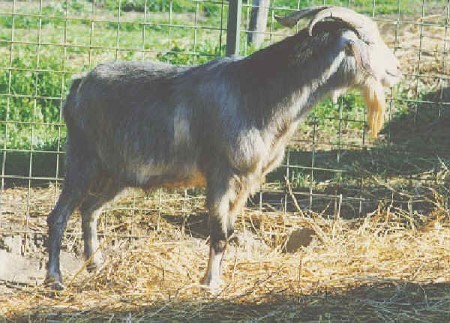 |
| Source: Agraria.org |
Originating from the picturesque landscapes of the Campania region in Italy, Screziata Goats stand as a testament to the region's rich agricultural heritage and natural diversity. With a history deeply rooted in the rural traditions of southern Italy, these goats have become emblematic of the region's pastoral landscapes and cultural identity.
Screziata Goats boast a distinctive appearance characterized by their unique coat coloration and sturdy physique. Their name, "Screziata," translates to "speckled" or "mottled" in Italian, aptly capturing the striking pattern adorning their coat. Showcasing a captivating blend of hues ranging from earthy browns and warm tans to creamy whites, their speckled coats create a visually mesmerizing tapestry against the rustic backdrop of the Campania countryside.
Bearing witness to centuries of selective breeding and adaptation to the local environment, Screziata Goats exhibit robust physical features ideally suited for their pastoral lifestyle. With sturdy legs and compact bodies, these goats navigate the rugged terrain of Campania with ease, embodying the resilience and hardiness synonymous with traditional Italian livestock breeds.
In addition to their aesthetic appeal, Screziata Goats are valued for their multifaceted utility in the agricultural practices of the Campania region. Renowned for their exceptional milk production, these goats play a vital role in the local dairy industry, providing high-quality milk cherished for its rich flavor and nutritional value. Furthermore, their meat is highly esteemed for its tenderness and flavor, making Screziata Goats a prized asset for farmers and culinary enthusiasts alike.
Amidst the verdant hills and fertile valleys of Campania, Screziata Goats roam freely, embodying the timeless connection between humans and animals in a landscape shaped by centuries of agricultural tradition. Their presence symbolizes the enduring bond between the people of Campania and their natural surroundings, weaving a narrative of resilience, adaptation, and cultural heritage that continues to resonate throughout the region.
